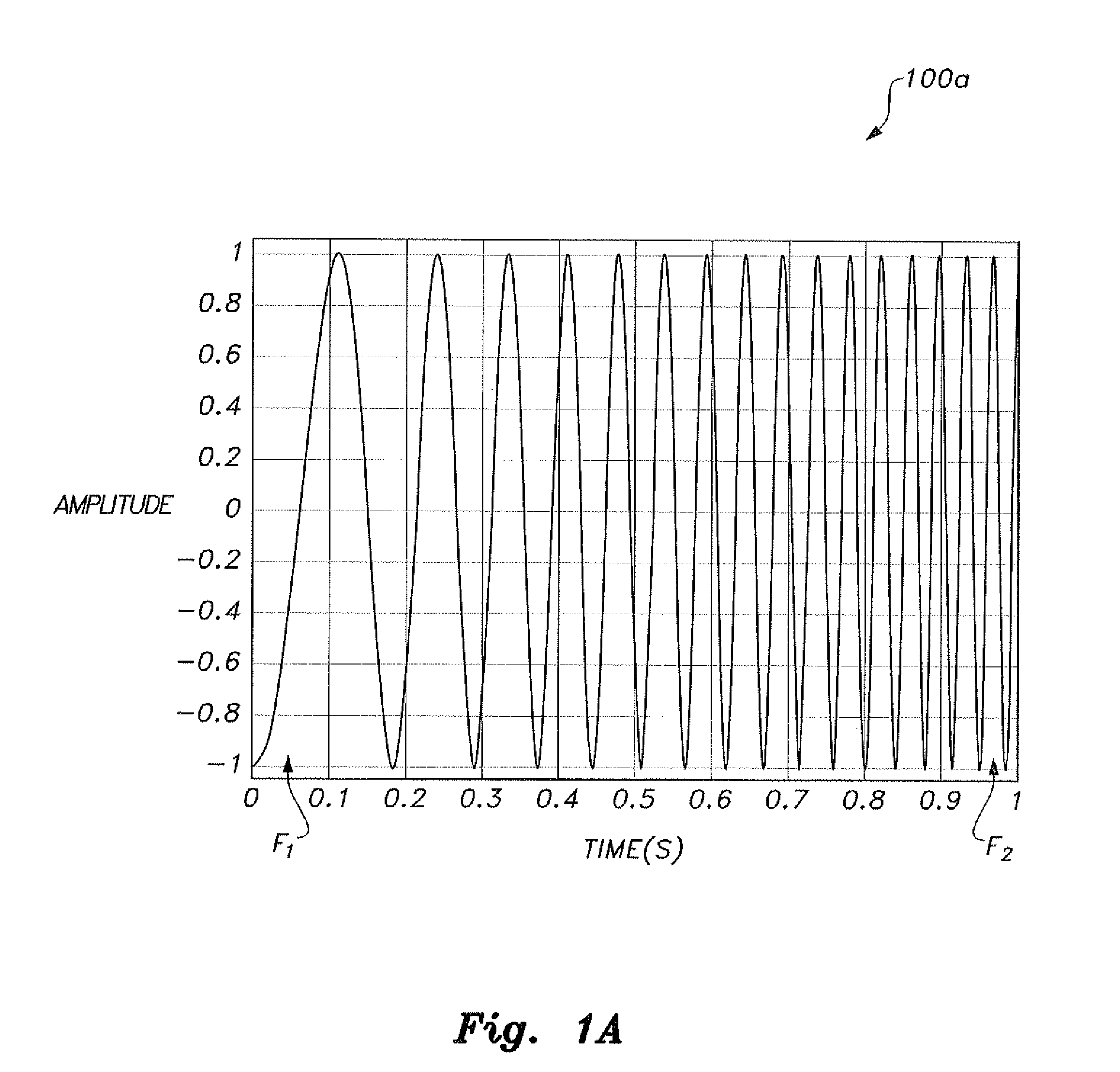Cognitive radio sensing method and system
a radio sensing and cognition technology, applied in the field of radio systems, can solve the problems of non-trivial system complexity, difficult practical implementation, high computational complexity, etc., and achieve the effects of improving the quality of sensing, enhancing cognition, and easing the computational complexity of sensing
- Summary
- Abstract
- Description
- Claims
- Application Information
AI Technical Summary
Benefits of technology
Problems solved by technology
Method used
Image
Examples
Embodiment Construction
[0019]The cognitive radio sensing method and system uses wideband chirp signal frequency modulation for a digital signal. Linear frequency (chirp) modulation is a result of linear frequency modulation for digital signal. The instantaneous frequency of the chirp signal increases or decreases linearly with time. As shown in FIG. 1A, the bandwidth of a chirp signal, 100a, extends from the starting frequency sweep, f1, to the final frequency sweep f2. With a proper choice for processing gain, i.e., FT product, where T is the bit period, the spectrum of the chirp signal has a distinctive near square shape 100b, as shown in FIG. 1B.
[0020]As shown in FIG. 2, the system architecture is a hybrid network 200 comprising a primary radio network 312 and a cognitive “adaptive” radio network 313. The two networks 312 and 313 coexist without being physically connected.
[0021]The primary radio network 312a is comprised of a primary base station 304 serving primary “licensed” users over the primary co...
PUM
 Login to View More
Login to View More Abstract
Description
Claims
Application Information
 Login to View More
Login to View More - R&D
- Intellectual Property
- Life Sciences
- Materials
- Tech Scout
- Unparalleled Data Quality
- Higher Quality Content
- 60% Fewer Hallucinations
Browse by: Latest US Patents, China's latest patents, Technical Efficacy Thesaurus, Application Domain, Technology Topic, Popular Technical Reports.
© 2025 PatSnap. All rights reserved.Legal|Privacy policy|Modern Slavery Act Transparency Statement|Sitemap|About US| Contact US: help@patsnap.com



